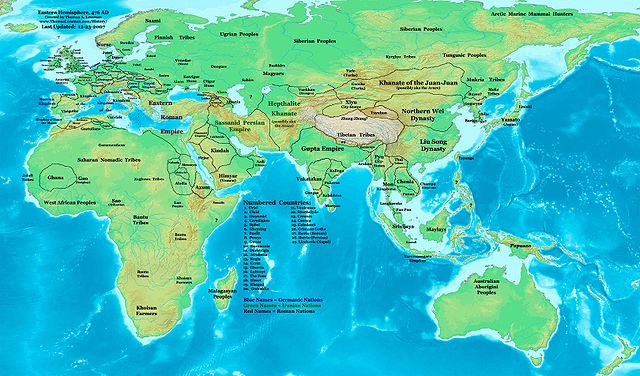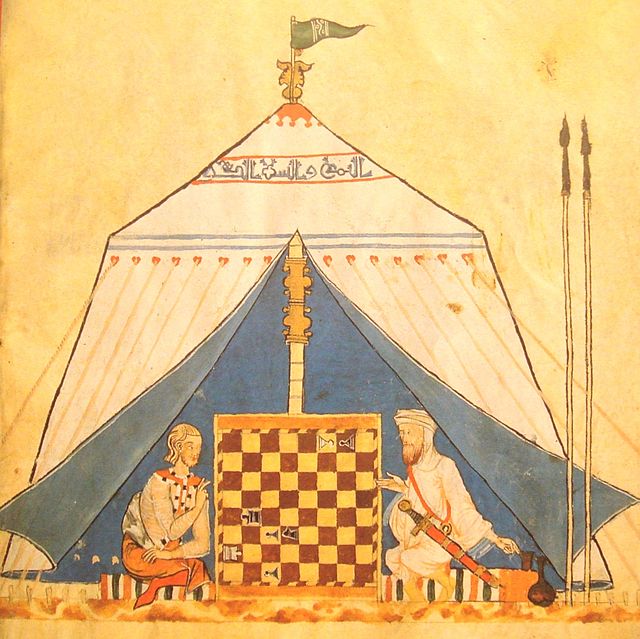Mauri was the Latin designation for the Berber population of Mauretania, located in the west side of North Africa on the shores of the Mediterranean Sea, Mauretania Tingitana and Mauretania Caesariensis, in present-day Morocco and northwestern Algeria.
Mauretanian cavalry under Lusius Quietus fighting in the Dacian Wars, from the Column of Trajan
Eastern Hemisphere in 476 CE, showing the Mauri kingdoms after the fall of Rome
The term Moor is an exonym first used by Christian Europeans to designate the Muslim populations of the Maghreb, al-Andalus, Sicily and Malta during the Middle Ages. Moors are not a single, distinct or self-defined people. The 1911 Encyclopædia Britannica observed that the term had "no real ethnological value." Europeans of the Middle Ages and the early modern period variously applied the name to Arabs, Berbers, and Muslim Europeans.
Castillian ambassadors attempting to convince Moorish Almohad king Abu Hafs Umar al-Murtada to join their alliance (contemporary depiction from the Cantigas de Santa María)
Christian and Moor playing chess, from The Book of Games of Alfonso X, c. 1285
Moros y Cristianos festival in Oliva.
The Great Mosque of Kairouan was founded by the Arab general Uqba ibn Nafi in 670 during the Islamic conquest, to provide a place of worship for recently converted or immigrating Muslims.






